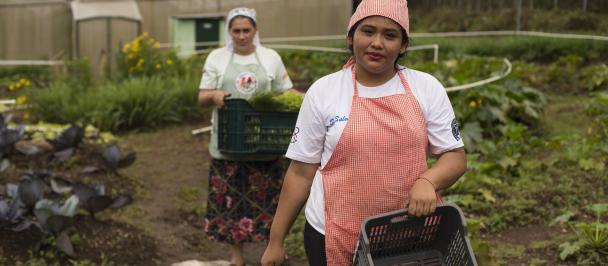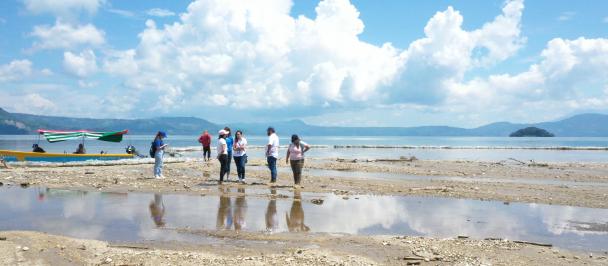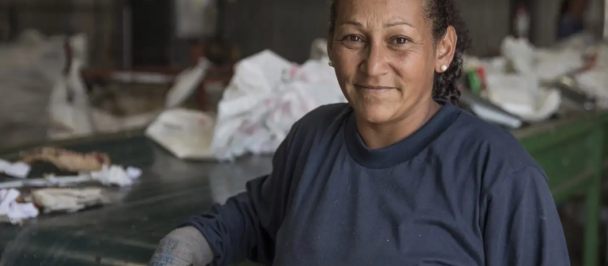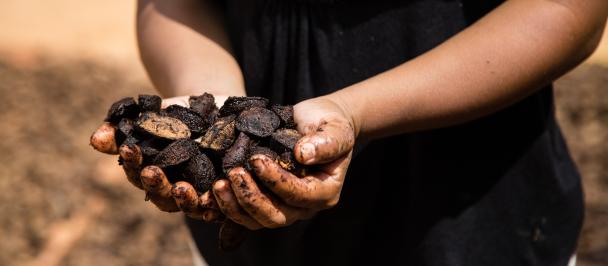When seeking more effective solutions to water scarcity adaptation, how could we measure “effectiveness”?
Prototyping "smallholder farmers’ science"
7 de Junio de 2023
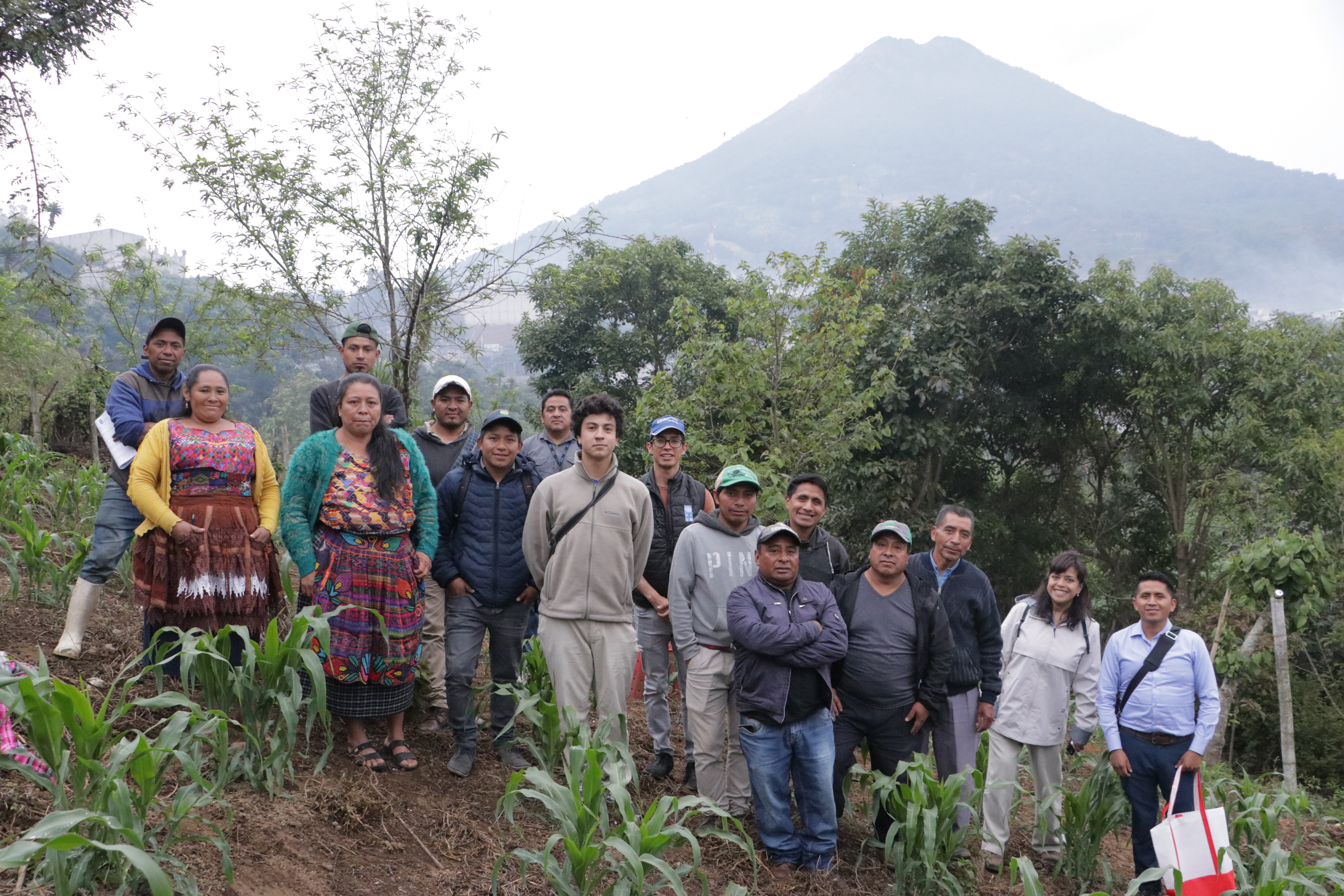
Members of CICODUMA and VEGEXSA communities in the testing of prototypes from data measurement to a "science of small agricultural producers".
In our journey through Collective Intelligence [CI], we have built a catalog of solutions. However, the investigation that innovation entails made us reflect, generating new learning questions:
What conditions allow one or the other solution to work better in the plots of smallholder farmers (SHF) in Santa María Jesús?
If our initial value proposition was to identify efficient water management solutions, would it be worthy to do a rapid reverse engineering process?
How do we know that we’re working the most efficient solution, if we haven’t measured how much water we can capture from “current” conditions?
Neither do we know how to respond to water quality if we haven’t measure water quality today?
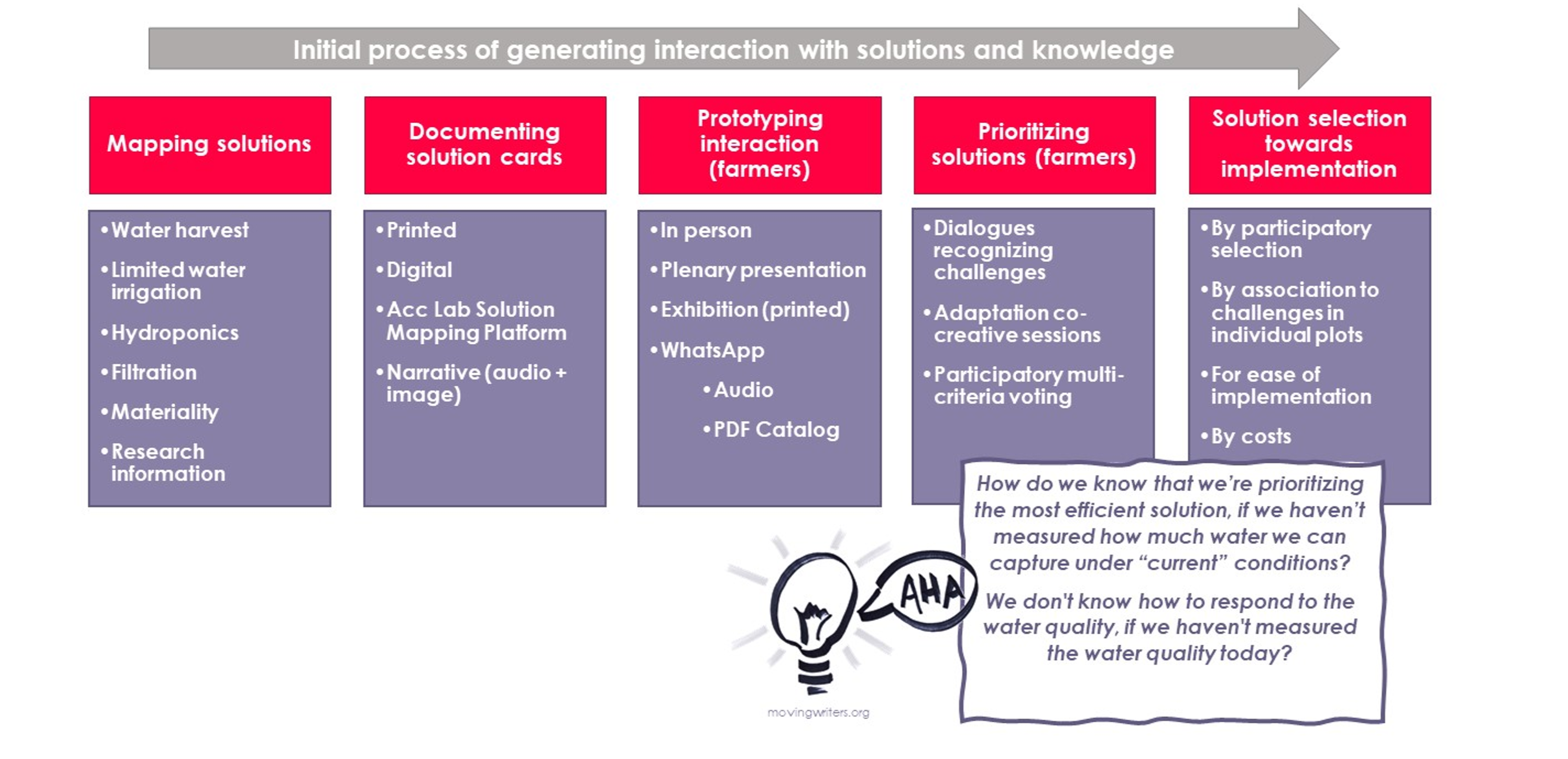
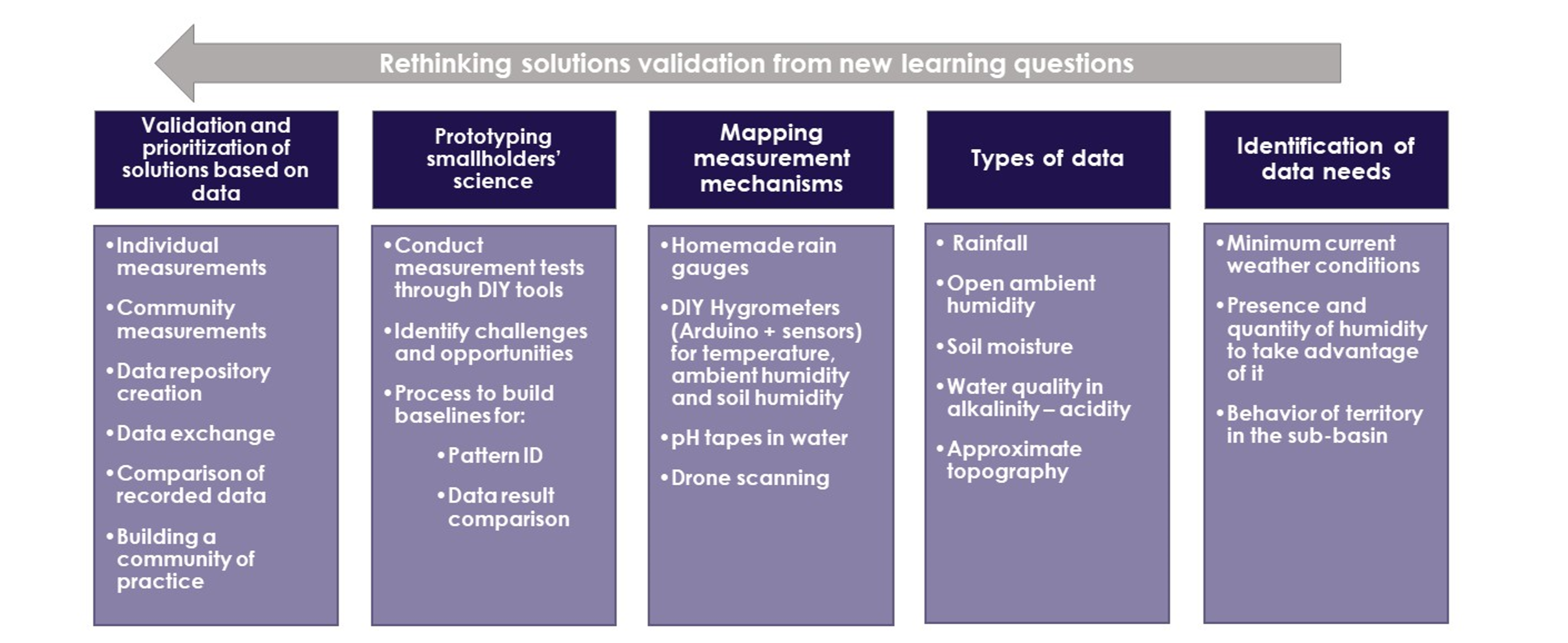
Two different approaches to identifying solutions to water scarcity. Second approach inspired by reverse engineering, showing the value of generating data from various sources.
Therefore, we reoriented the CI process towards building a community of practice [CP] that allows "Empowering smallholder farmers by accessing knowledge on efficient water management solutions".
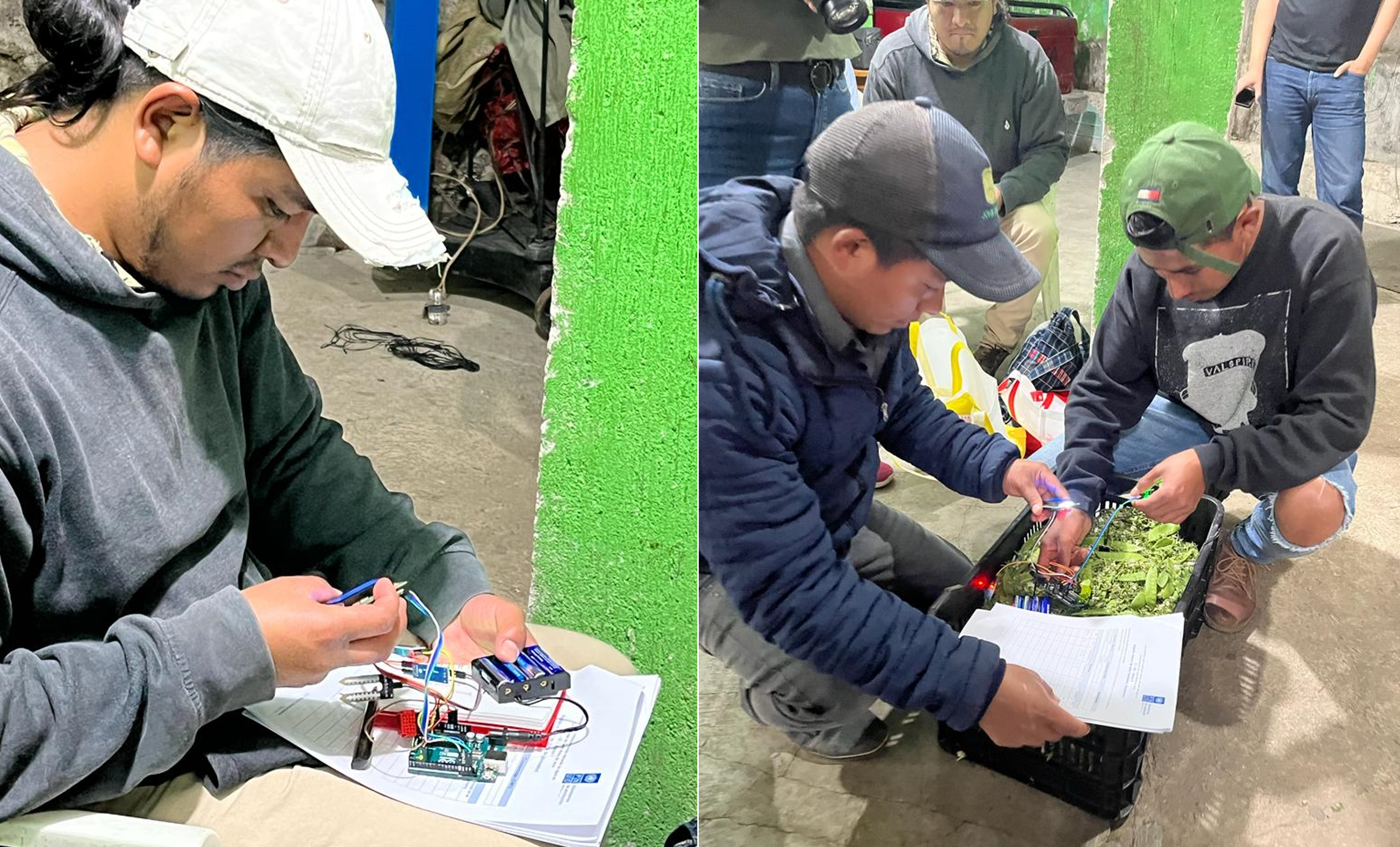
VEGEXSA growers testing the operation of the sensors for temperature measurement and soil moisture simulation.
Better understanding of the challenges and opportunities in the face of hyper-local climate conditions.
Identifying water harvesting solutions according to climate circumstances for each plot (and recognizing) that the plots are dispersed and present diverse conditions.
Generating a baseline to be able to measure the efficiency in the current management and handling with the solutions implemented in:
a. Increased water catchment
b. Water quality / filtration solutions
However, the next question we asked ourselves in dialogues with the Accelerator Labs Global Team was:
What incentives exist to generate data and exchange it in the community of practice? And more importantly, what data is functional for smallholder farmers’ activities?
The SHF communities have been certified with GlobalGAP, as the internal entity for certified agricultural production with the support of the UNDP Volcanic Chain Project, Tikonel (OSC) through the guides and practices of Aliar Guatemala.
For this reason, we have identified that maintaining the quality of production, not only in terms of water supply for irrigation, but also in terms of soil moisture to nourish the crops and the quality of the water used, are essential to maintain the certification seals.
SHFs do not operate in isolation, they are and become more competitive collectively in the economic exchange. They need to produce the minimum volumes of snow pea under best agricultural practices (BAP), which is evaluated year after year.
"What is not defined cannot be measured. What is not measured cannot be improved. What is not improved, is always degraded"
. - William Thomson Kelvin (1824 – 1907).Our journey:
We started mapping of tools or mechanisms that would allow us to assess local environmental conditions, in order to better adapt the solutions to adapt to water scarcity; and what better than test them the field with farmers itself on their plots.
After conciliating space with members of SHF’s communities of Santa María de Jesús, Sacatepéquez, we organized the field visit to present and validate the prototypes DIY, that included:
Rain gauges
Hygrometer for humidity and air temperature
Hygrometer for soil moisture
Water quality by pH coloration
Potential in the use of drones for topographic surveys
During our visit, there was an unexpected storm, so we carried out the first measurements inside the CICODUMA center, with the participation of VEGEXSA. When the storm was over, we went out to the village to find "Don Mauricio’s" plot, which is on the slopes of the village periphery. Don Mauricio proudly showed us the basic grain crops he currently has.
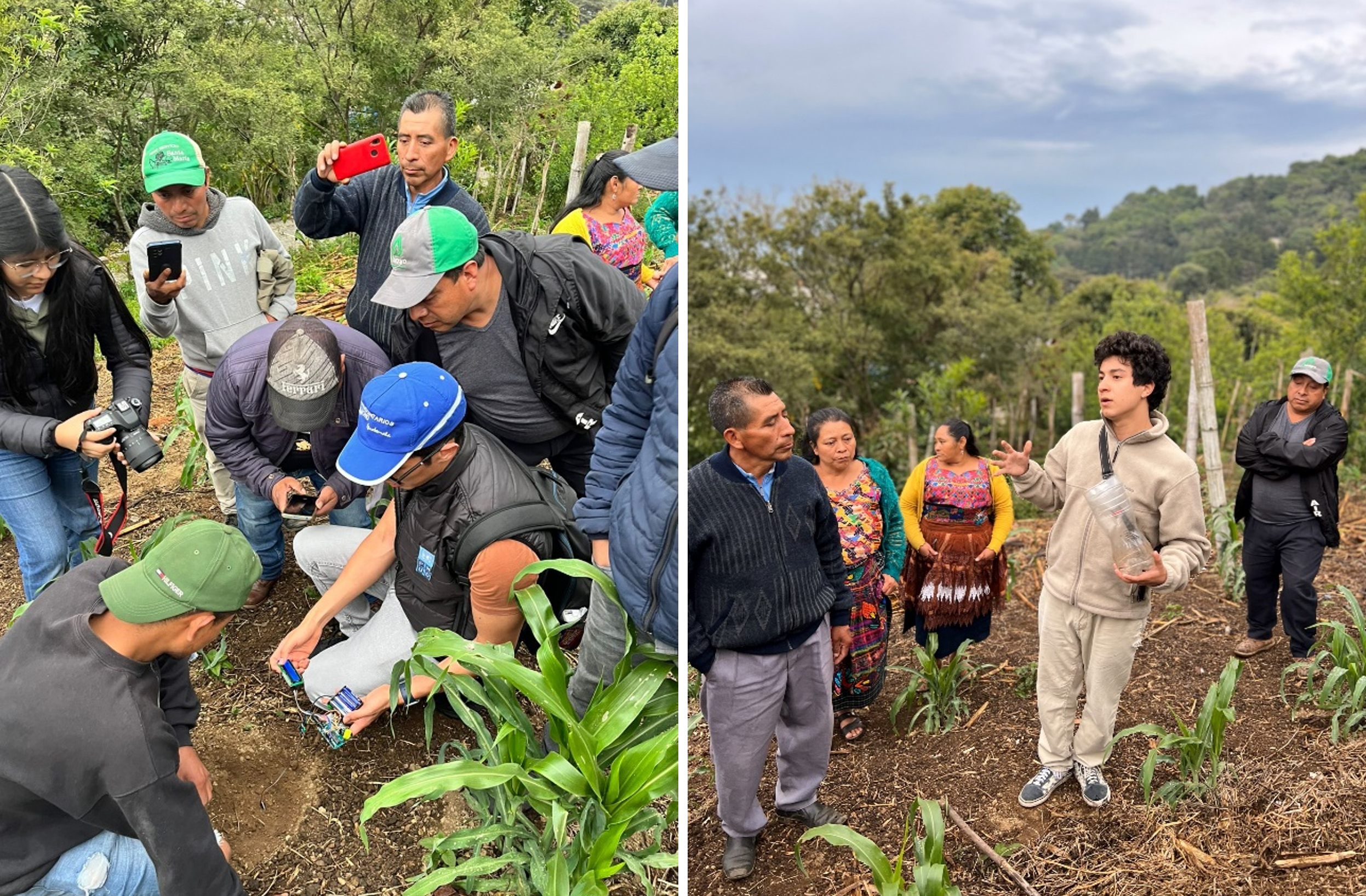
Field measurements through homemade rain gauge and sensors to identify temperature, humidity in air and soil moisture.
Prototyping knowledge transfer, we delivered detailed printed manuals (as a prototype to knowledge exchange within a community of practice). Each manual present instructions to run measurements as a way to replicate with other farming communities. These manuals were prepared with the help of the two UN Volunteers, who collaborate with the Accelerator Lab.
Here you will find the practical guides for you to also assemble these means for climate measurement:
What we found:
It became evident that there is capacity to generate a smallholder farmers’ science (SHF-S) of, however, discipline is required to:
a. Frequency of data collection
b. Data collection schedule
c. Time to generate a baseline, it should be annual.
d. Time to generate comparisons, it should be by month to month in the annual sequence.
About the tools, the one that stirred the greatest interest was the hygrometer applied to soil moisture, expressed genuine curiosity to learn about:
Soil moisture in your own plot (a very granular information)
Identifying the convenient time to irrigate their crops
Opportunity to diversify in the type of plants that could be grown to subsist in soil humidity conditions per plot.
Rain gauges, hygrometers, and pH kits to measure alkalinity - acidity in water were identified as friendly. Regarding alkalinity measurement, although it is not a DIY mechanism, Experimentation Area, identified availability in marketplaces, allowing to further measurements more frequently.
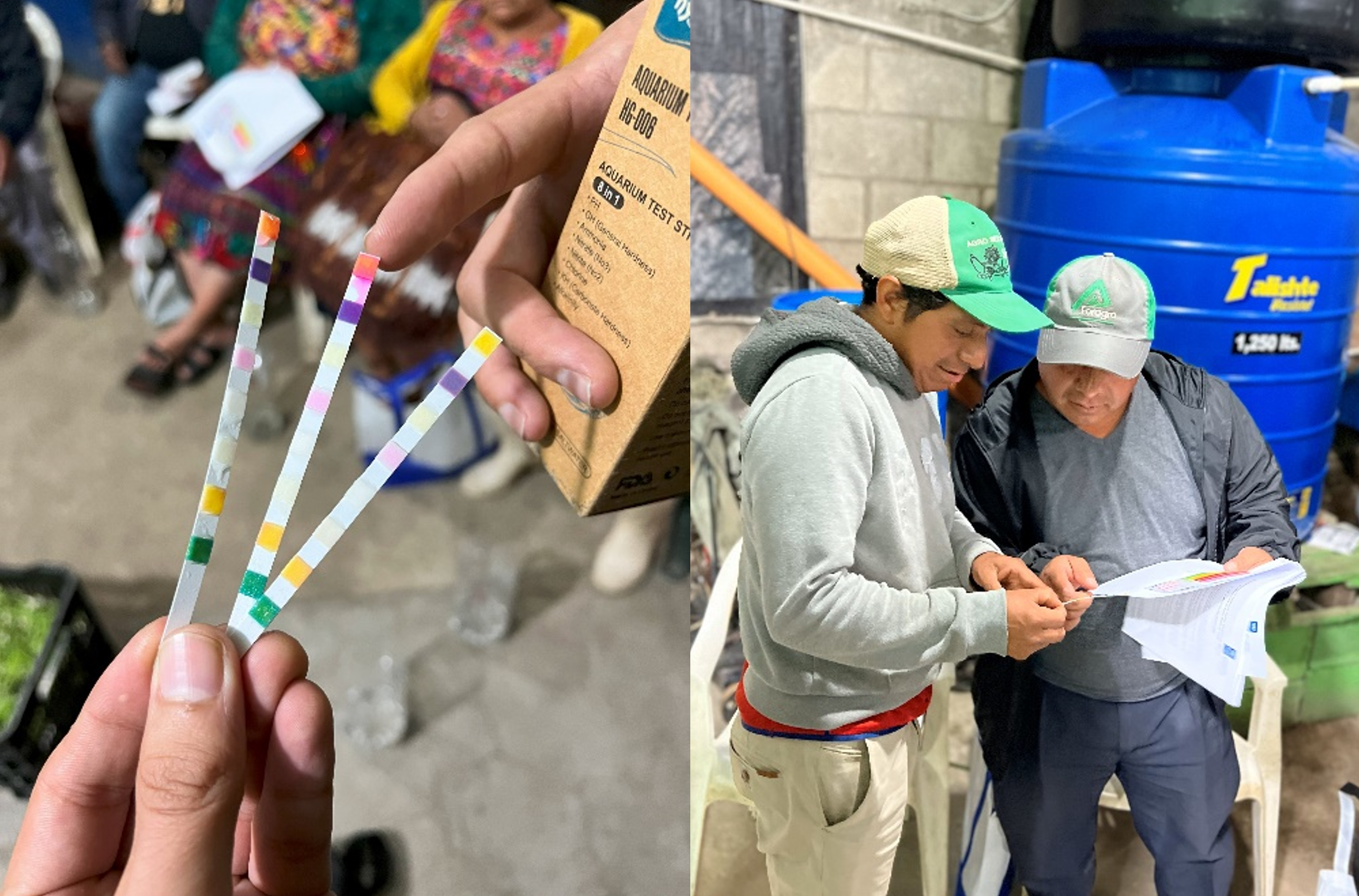
Alkalinity and acidity measurements using pH bands.
Preliminary measurements of humidity and relative temperature at the points traveled, including plots, showed:
Minimum temperature: 15.16 °C at 17:00
Maximum temperature: 25.30°C at 10:30
For humidity, the register inside CICODUMA headquarters was 59%
Minimum humidity: 74% at 10:30
Maximum humidity: 79%
For soil moisture we identify in plot 35%.
Regarding the drone, there were setbacks in updating the application to plan flight and due to disrupted connectivity, it was not possible to test the drone by them.
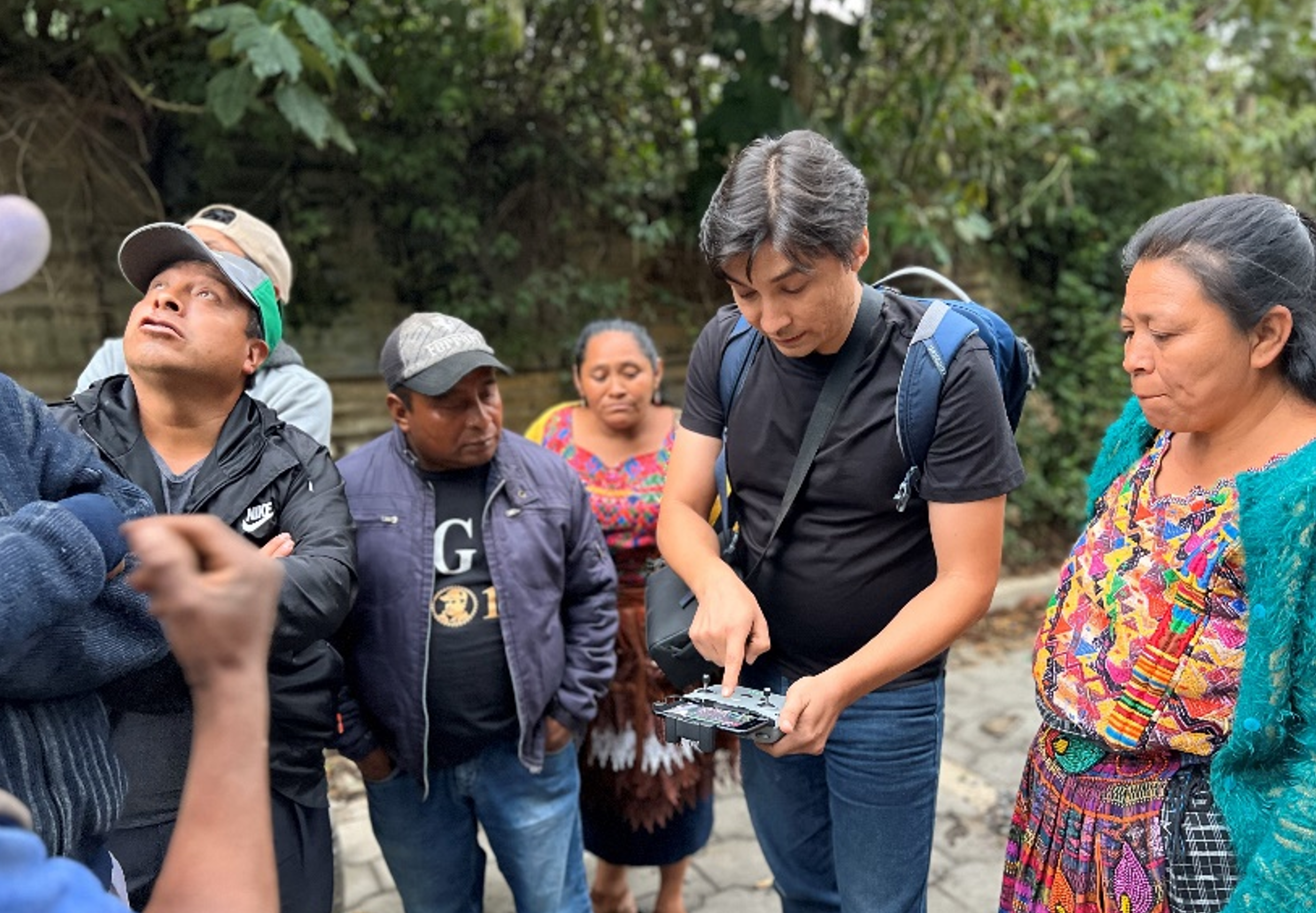
Demonstration of flight plan for territory scanning with drones.
What challenges we identified:
During the measurements, the farmers emphasized their crop plots are distributed in several points of the municipal territory. Thus, plots are not adjacent to each other, the measurement journeys can take much longer, in case of having few tools available for all the plots.
Many plots are on the slopes of the volcano in extremely high and difficult to access territories, which is why it is suggested that for a C-SAP, fixed measurement mechanisms be installed per plot.
We identified four types of limitations on connectivity and digital devices:
a. Limited telecoms network coverage
b. Limited mobile device capacity (storage, download, apps)
In case of downloading the applications, what is the cost, is it sustainable for them?
Geolocation
c. Data payment capability
By prosuming audio-visual material, uploading and downloading in real time.
*Prosumption: term used in smart cities for the production and consumption of information in the cloud, social networks, web.
d. Digital literacy
Although most of the SHF own mobile devices, not all devices have applications such as QR code reading, location sharing from WhatsApp, video reading or access to hyperlinks.
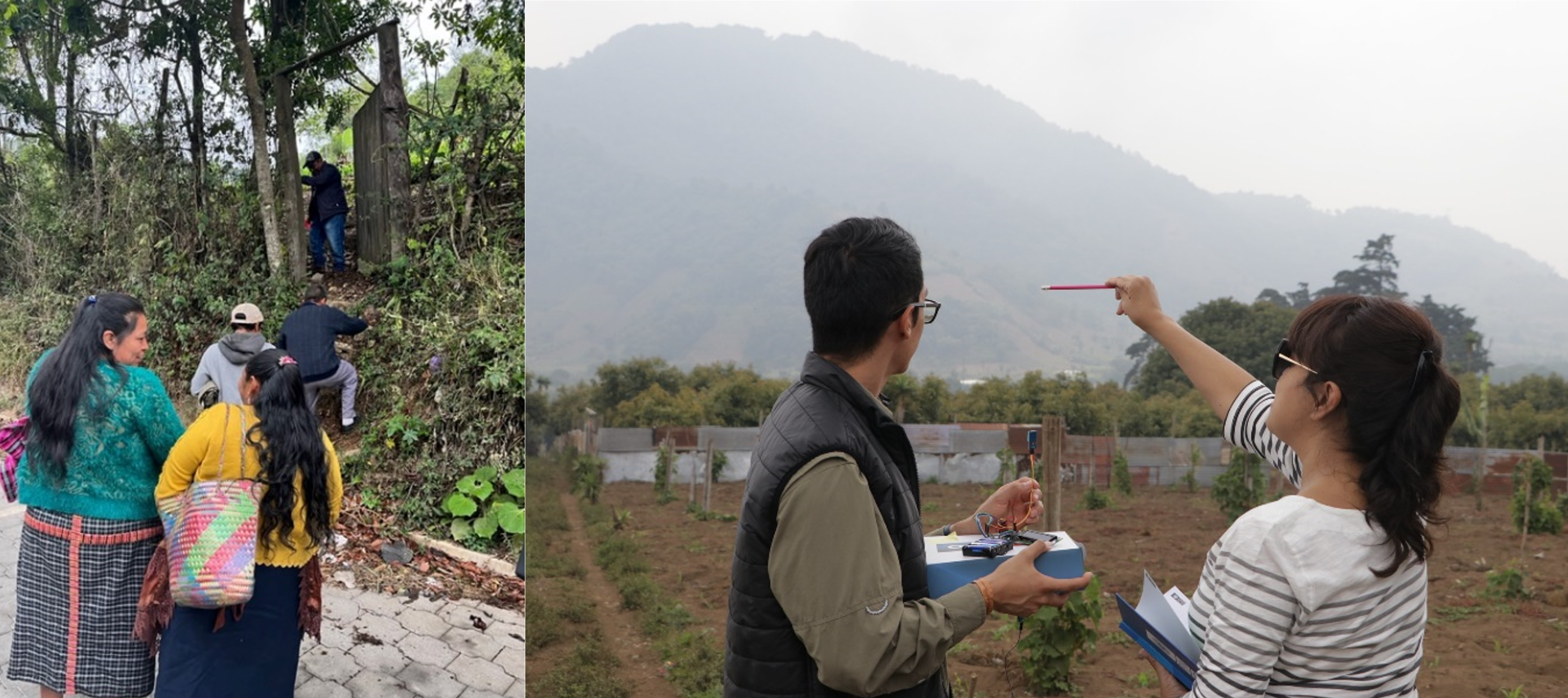
Journey across the municipal territory for preliminary data collection.
Recommendations for shaping smallholder farmers’ science (SHF-S) into a community of practice:
The potential of SHF science was weighed through measurement prototypes, which are not solutions to water scarcity, but rather instruments to generate evidence and support decision making. Thus, guiding the prioritization or selection of solutions, based on data from identified local conditions.
Farmers showed genuine interest in the prototypes, understanding the linkage in generating evidence to improve water management in the face of scarcity. But measuring takes time and discipline, so it is important that, for SHF-S, there is broader participation from individual farmers towards a collective knowledge ecosystem.
Digital data collection is to be framed under the connectivity and mobile devices capabilities, which were very limited. Therefore, is suggested to navigate with humbleness and consider other field data collection options with communities to maintain their interest and visibility of results.
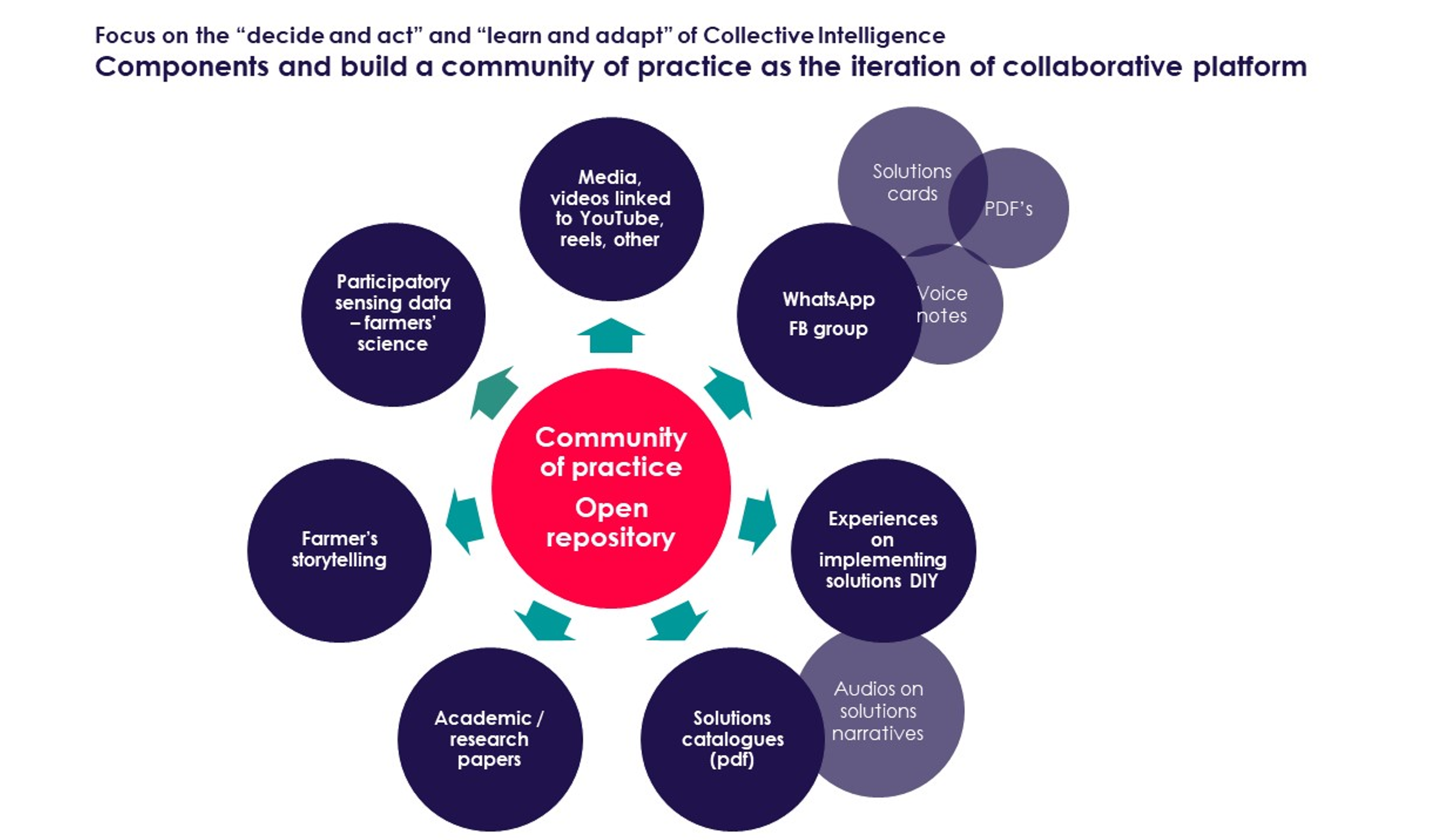
Evolution of the CI process interaction of knowledge and solutions.
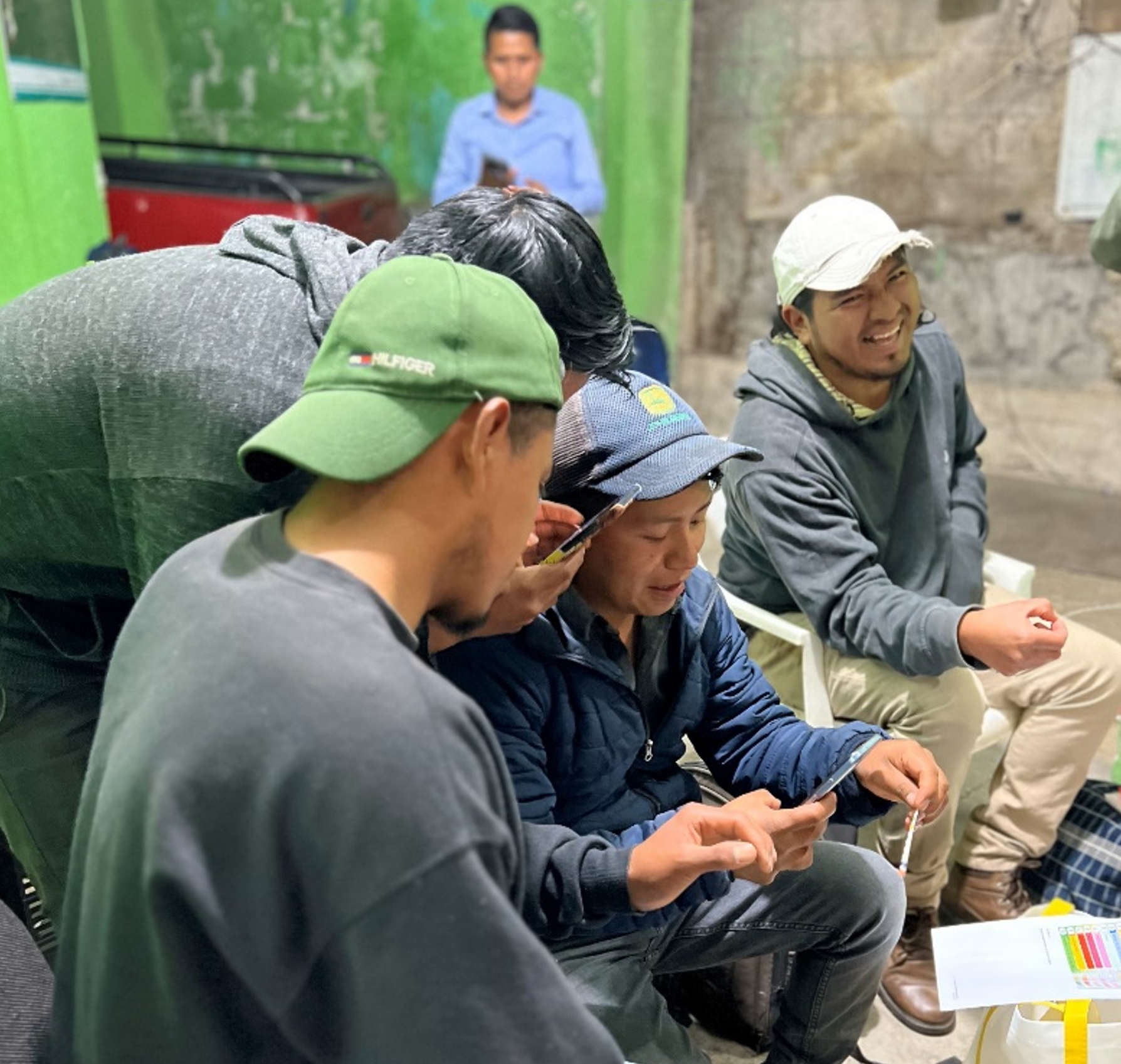
VEGEXSA Producers.

 Locations
Locations








